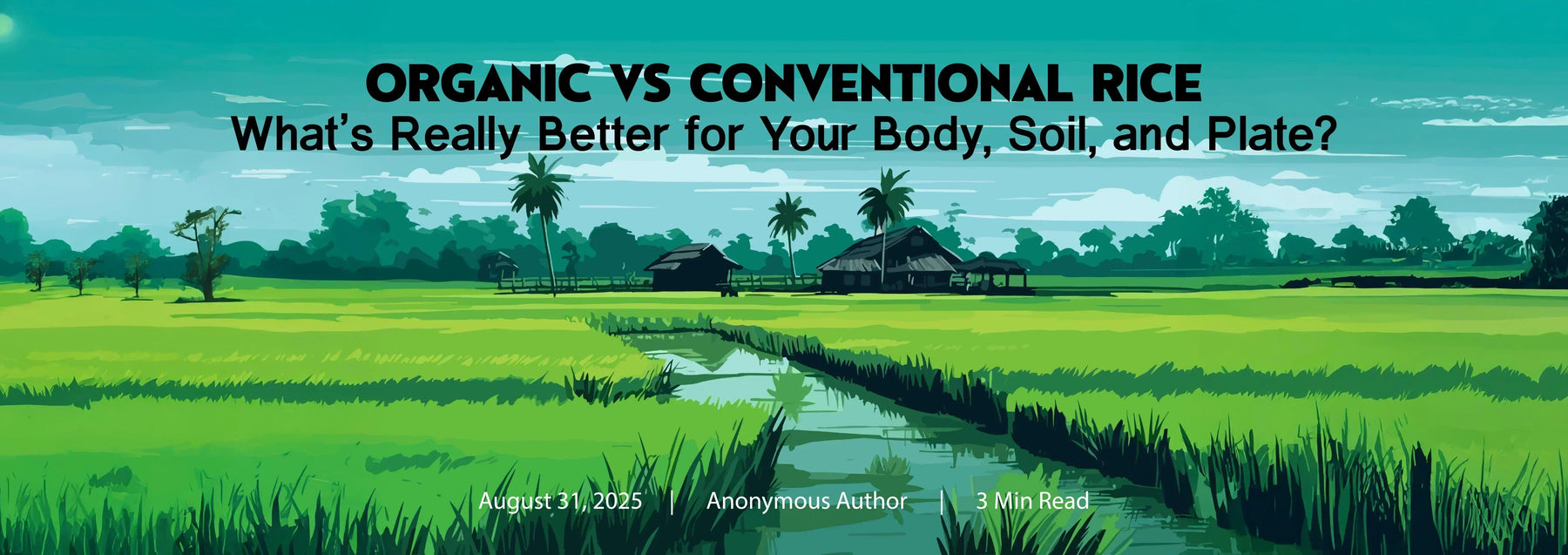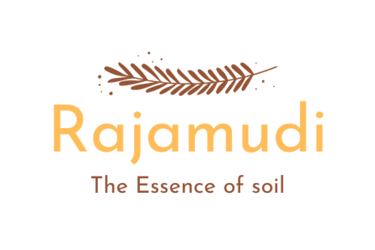
Organic vs Conventional Rice: What’s Really Better for Your Body, Soil, and Plate?
The Aisle Dilemma: Brown Bag or White Sack?
Picture this: You’re standing in your local grocery store, staring at two bags of rice. One proudly says “Organic - Pesticide-Free”, while the other is a larger, cheaper but colourful sack with no such labels. You flip them back and forth, wondering: “Is organic rice really better than regular rice? Or is this just a fancy sticker?”
If you've ever been in this dilemma, you're not alone. As more Indian households embrace conscious eating, questions like “Which rice is healthier?” or “Why is organic rice so expensive?” are popping up at dining tables, WhatsApp groups, and Google searches alike.
Let’s unpack the grains of truth behind this food story and discover what’s really better for your body, soil, and plate.
What is meant by Organic Rice?
To understand organic vs conventional, we first need to decode: What is organic rice?
Organic rice is rice grown without synthetic pesticides, herbicides, or chemical fertilisers. Instead, farmers use age-old Indian methods like composting, cow dung, neem sprays, companion planting, and crop rotation to grow rice in a way that nurtures the soil and protects eco-systems.
Unlike conventional rice, organic varieties are typically grown in smaller batches, often in indigenous regions, and hand-harvested with more care.
So, when you buy organic rice, you're not just buying rice, you're buying a promise of purity, clean soil, and a future free of chemical dependency.

Is Organic Rice Healthier Than Regular Rice?
Short answer? Yes and here's why.
Conventional rice often carries residues of pesticides, which can stay even after rinsing and cooking. While government standards try to regulate this, long-term consumption of pesticide-laden grains has been linked to hormonal imbalance, gut issues, and even chronic illnesses.
Organic rice, being pesticide-free, means:
It may not taste dramatically different at first bite but your body will know the difference slowly but surely.
Which Rice Is Pesticide-Free in India?
This is one of the most Googled questions. Most mass-market rice brands, unless specifically organic certified, are not pesticide-free.
Here’s how to find out:
Among the best organic rice in India, you’ll find gems like:
These are naturally grown without harmful additives, sprays, or polishing chemicals.

Organic rice costs more upfront, but less to your body and planet in the long run.
When you buy a Rajamudi Rice pack, you’re paying for:
A Word from Dadi: “Grain Isn’t Just Food, It’s Medicine”
Our grandparents often soaked rice overnight, bought from small millers, and always asked: “Khaad daala hai kya?” (Did they add chemicals?)
They didn’t call it “organic.” They called it common sense.
Returning to organic today is not a trend. It’s a return to the food systems that sustained generations without harming the land.
So, when you choose organic, you're voting for:
And if you're still unsure where to begin - try a small pack (link RR). Feel the difference in aroma, texture, and energy.
Because the truth is, what’s good for the soil is good for the soul.
Shop Now: www.rajamudi.com

